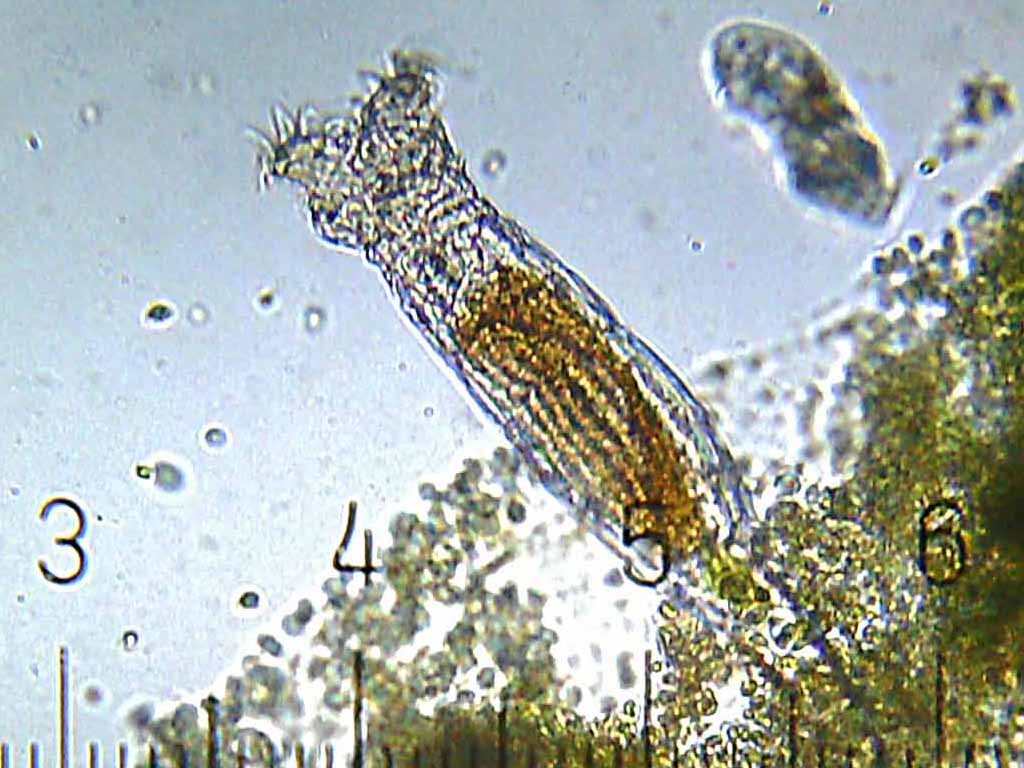Rotifers
by Daphne Graf
Rotifera is a microscopic, monophyletic, invertebrate phylum, with over 1950 species worldwide. Rotifers, or, more commonly, “wheel-bearers”, range in size from 50 micrometers to 2 millimeters. On average, though, they are about 0.1-0.5 millimeters long. Rotifers were first described in 1703, although there are claims that they have been studied for much longer.
Most rotifers are female, and the few that are male only live for about two to three days. Classes are defined by the presence or absence of vitellaria in the ovaries. Rotifers can reproduce both sexually and asexually, depending on the particular species.
 The phylum Rotifera is made up of three classes: Seisonidea (see-sun-eye-dee-uh), Bdelloidea (dell-oy-dee-uh), and Monogonota (mono-gono-tuh). The only genus in the class Seisonidea, Seison, consists of two species, both of which are parasites. The males are well developed, the ovaries lack vitellaria, and the corona is rudimentary. The class Bdelloidea is all freshwater. They were named for their wormlike movement. There are no known males in this class; their reproduction is strictly parthenogenesis. They also have a well-developed corona. The phylum Rotifera is made up of three classes: Seisonidea (see-sun-eye-dee-uh), Bdelloidea (dell-oy-dee-uh), and Monogonota (mono-gono-tuh). The only genus in the class Seisonidea, Seison, consists of two species, both of which are parasites. The males are well developed, the ovaries lack vitellaria, and the corona is rudimentary. The class Bdelloidea is all freshwater. They were named for their wormlike movement. There are no known males in this class; their reproduction is strictly parthenogenesis. They also have a well-developed corona.
The final class of rotifers is Monogonota. This class makes up 90% of known rotifers. The few known males are quite small, and rotifers in the class are separated from each other by the presence or absence of a lorica or secreted tube. Monogonota is split into three orders: Ploima, Flosculariacea, and Collothecacea. Ploima is made up of free-swimming plankton, each of which posses a “foot” with two “toes”. Flosculariacea includes a few free swimming species, but most of them are more sessile. Neither Ploima nor Flosculariacea have especially large coronas. Collothecacea consists of solitary, sessile rotifers with large, lobed coronas and centered mouths.
Bibliography
|